Potřebujeme váš souhlas k využití jednotlivých dat, aby se vám mimo jiné mohly ukazovat informace týkající se vašich zájmů. Souhlas udělíte kliknutím na tlačítko „OK“.
ASTM D5739-06(2013)
Standard Practice for Oil Spill Source Identification by Gas Chromatography and Positive Ion Electron Impact Low Resolution Mass Spectrometry
Automaticky přeložený název:
Standardní praktiky pro Oil Spill identifikaci zdroje plynovou chromatografií a kladných iontů nárazem elektronů s nízkým rozlišením hmotnostní spektrometrie
NORMA vydána dne 15.2.2013
Informace o normě:
Označení normy: ASTM D5739-06(2013)
Poznámka: NEPLATNÁ
Datum vydání normy: 15.2.2013
Kód zboží: NS-32335
Počet stran: 12
Přibližná hmotnost: 36 g (0.08 liber)
Země: Americká technická norma
Kategorie: Technické normy ASTM
Kategorie - podobné normy:
Anotace textu normy ASTM D5739-06(2013) :
Keywords:
anthracenes, dibenzothiophenes, extracted ion chromatogram, fused-ring aromatics, gas chromatography, identification, mass spectrometry, naphthalenes, oil spill, phenanthrenes, selected ion monitoring, steranes, triterpanes, weathering, ICS Number Code 71.040.50 (Physicochemical methods of analysis)
Doplňující informace
| Significance and Use | ||||||||||||||||||
|
4.1 This practice is useful for assessing the source for an oil spill. Other less complex analytical procedures (Test Methods D3328, D3414, D3650, and D5037) may provide all of the necessary information for ascertaining an oil spill source; however, the use of a more complex analytical strategy may be necessary in certain difficult cases, particularly for significantly weathered oils. This practice provides the user with a means to this end. 4.1.1 This practice presumes that a “screening” of possible suspect sources has already occurred using less intensive techniques. As a result, this practice focuses directly on the generation of data using preselected targeted compound classes. These targets are both petrogenic and pyrogenic and can constitute both major and minor fractions of petroleum oils; they were chosen in order to develop a practice that is universally applicable to petroleum oil identification in general and is also easy to handle and apply. This practice can accommodate light oils and cracked products (exclusive of gasoline) on the one hand, as well as residual oils on the other. 4.1.2 This practice provides analytical characterizations of petroleum oils for comparison purposes. Certain classes of source-specific chemical compounds are targeted in this qualitative comparison; these target compounds are both unique descriptors of an oil and chemically resistant to environmental degradation. Spilled oil can be assessed in this way as being similar or different from potential source samples by the direct visual comparison of specific extracted ion chromatograms (EICs). In addition, other, more weathering-sensitive chemical compound classes can also be examined in order to crudely assess the degree of weathering undergone by an oil spill sample. 4.2 This practice simply provides a means of making qualitative comparisons between petroleum samples; quantitation of the various chemical components is not addressed. |
||||||||||||||||||
| 1. Scope | ||||||||||||||||||
|
1.1 This practice covers the use of gas chromatography and mass spectrometry to analyze and compare petroleum oil spills and suspected sources. 1.2 The probable source for a spill can be ascertained by the examination of certain unique compound classes that also demonstrate the most weathering stability. To a greater or lesser degree, certain chemical classes can be anticipated to chemically alter in proportion to the weathering exposure time and severity, and subsequent analytical changes can be predicted. This practice recommends various classes to be analyzed and also provides a guide to expected weathering—induced analytical changes. 1.3 This practice is applicable for moderately to severely degraded petroleum oils in the distillate range from diesel through Bunker C; it is also applicable for all crude oils with comparable distillation ranges. This practice may have limited applicability for some kerosenes, but it is not useful for gasolines. 1.4 The values stated in SI units are to be regarded as the standard. 1.5 This standard does not purport to address all of the safety concerns, if any, associated with its use. It is the responsibility of the user of this standard to establish appropriate safety and health practices and determine the applicability of regulatory limitations prior to use. |
||||||||||||||||||
| 2. Referenced Documents | ||||||||||||||||||
|
Podobné normy:
Historická
1.1.2014
Historická
15.9.2013
Historická
1.12.2009
Historická
1.6.2010
Historická
1.10.2011
Historická
1.7.2014
Doporučujeme:
Aktualizace technických norem
Chcete mít jistotu, že používáte pouze platné technické normy?
Nabízíme Vám řešení, které Vám zajistí měsíční přehled o aktuálnosti norem, které používáte.
Chcete vědět více informací? Podívejte se na tuto stránku.


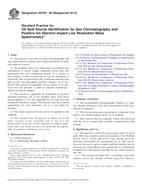
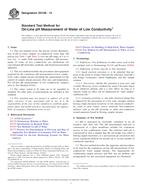 ASTM D5128-14
ASTM D5128-14 ASTM D5185-13e1
ASTM D5185-13e1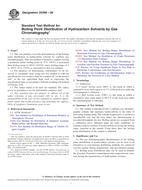 ASTM D5399-09
ASTM D5399-09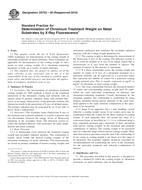 ASTM D5723-95(2010)..
ASTM D5723-95(2010)..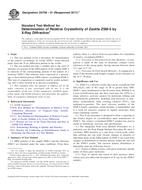 ASTM D5758-01(2011)e..
ASTM D5758-01(2011)e.. ASTM D5794-95(2014)..
ASTM D5794-95(2014)..
 Cookies
Cookies
